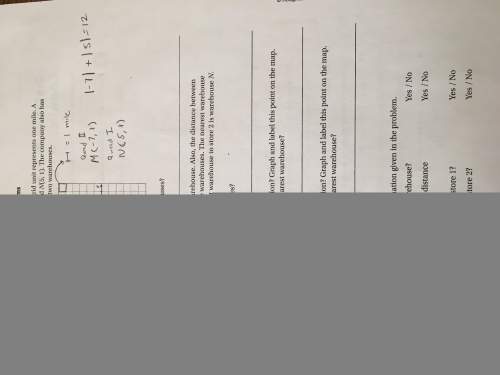
Physics, 19.12.2019 04:31 jazzycintron14
An object falls freely in a straight line and experiences air resistance proportional to its speed; this means its acceleration is a(t)equals minuskv(t), where k is a positive constant and v is the object's velocity. the speed of the object decreases from 1100 ft divided by s to 1000 ft divided by s over a distance of 1300 ft . approximate the time required for this deceleration to occur. hint: note that a(t)equals v prime (t ) and v(t)equals x prime (t ).
the time required for this deceleration to occur is approximately seconds. (do not round until the final answer. then round to four decimal places as needed.)

Answers: 2


Other questions on the subject: Physics

Physics, 22.06.2019 14:50, lilyrockstarmag
Abar magnet cut in half will form a total ofpoles. a)fourb)eightc)two
Answers: 1

Physics, 22.06.2019 15:10, Bgreene2377
Suppose that f : rn → rm and that a ∈ k, where k is a connected subset of rn . suppose further that for each x ∈ k there exists a δx > 0 such that f(x) = f(y) for all y ∈ bδx (x). prove that f is constant on k; that is, f(x) = f(a) for all x ∈ k
Answers: 1

Physics, 22.06.2019 19:30, rprest00
Amass m = 74 kg slides on a frictionless track that has a drop, followed by a loop-the-loop with radius r = 18.4 m and finally a flat straight section at the same height as the center of the loop (18.4 m off the ground). since the mass would not make it around the loop if released from the height of the top of the loop (do you know why? ) it must be released above the top of the loop-the-loop height. (assume the mass never leaves the smooth track at any point on its path.) 1. what is the minimum speed the block must have at the top of the loop to make it around the loop-the-loop without leaving the track? 2. what height above the ground must the mass begin to make it around the loop-the-loop? 3. if the mass has just enough speed to make it around the loop without leaving the track, what will its speed be at the bottom of the loop? 4. if the mass has just enough speed to make it around the loop without leaving the track, what is its speed at the final flat level (18.4 m off the ground)? 5. now a spring with spring constant k = 15600 n/m is used on the final flat surface to stop the mass. how far does the spring compress?
Answers: 3

Physics, 23.06.2019 00:50, anikakurup0
Which of the following examples illustrates static friction? a box sits stationary on a ramp. a ball rolling on the lawn eventually comes to rest. a car rounds a curve on a road. a fish swims upstream.
Answers: 1
You know the right answer?
An object falls freely in a straight line and experiences air resistance proportional to its speed;...
Questions in other subjects:

Biology, 06.05.2021 23:00





Chemistry, 06.05.2021 23:00


Mathematics, 06.05.2021 23:00

Law, 06.05.2021 23:00





